The News of the Day
August 1st, 2019 // 4:03 pm @ Oliver DeMille
The Mueller Hearing
 Two big things do stand out. First, Mueller was asked a number of questions about the report but frequently didn’t know what the report said. Even when Congressmen read quotes from the report, Mueller repeatedly couldn’t remember names or details. He seemed to not know much of what was written in his own report. Strange. To give someone so much power—literal power over the lives of real Americans—but who seems feebly unaware of what his own report says or even the names and details written in his report, is scary. Also, to the chagrin of many on the Left, it came out that Natalia Veselnitskaya, the Russian lawyer who famously met with Don Jr. in Trump Tower to share “dirt” on the Hillary campaign, actually met more times and much longer with the Hillary campaign to communicate “dirt” on Trump—making everything critics have claimed about the “inappropriate” Trump Tower meeting much worse for Hillary than for Trump.
Two big things do stand out. First, Mueller was asked a number of questions about the report but frequently didn’t know what the report said. Even when Congressmen read quotes from the report, Mueller repeatedly couldn’t remember names or details. He seemed to not know much of what was written in his own report. Strange. To give someone so much power—literal power over the lives of real Americans—but who seems feebly unaware of what his own report says or even the names and details written in his report, is scary. Also, to the chagrin of many on the Left, it came out that Natalia Veselnitskaya, the Russian lawyer who famously met with Don Jr. in Trump Tower to share “dirt” on the Hillary campaign, actually met more times and much longer with the Hillary campaign to communicate “dirt” on Trump—making everything critics have claimed about the “inappropriate” Trump Tower meeting much worse for Hillary than for Trump.
Second, and this is a big deal, the Mueller Report, and Mueller’s testimony in the hearings, states that the Special Counsel didn’t “totally exonerate” the accused. This is a whole new approach to American law. Prosecutors in the United States have never had the authority or power to “exonerate” anyone. They can charge, or not charge, a person. But they don’t exonerate, or withhold exoneration. This is at the heart of the freedom that the accused is presumed innocent until proven guilty. If we live in a nation where a citizen must receive “exoneration” from a government prosecutor or be presumed guilty, or receive “total exoneration” from a prosecutor or be presumed partially guilty, we’ve lost a major part of American freedom. Indeed, this was the most important difference between Anglo-Saxon law and European Norman law in history—and the American Framers loudly rejected the Norman approach and established “innocent until proven guilty” as the bedrock of American law. When asked about this Mueller doubled down that the prosecutor can decide whether to exonerate or not exonerate an accused American, a return, at least in his mind, to the historical Norman approach of Dictatorial law.
No prosecutor in U.S. history has had, or claimed to have, this power until now. This is a serious and dangerous example of “creep” by government usurping powers that are not part of the Constitution. Unless Americans refuse to let this stand, another major freedom will be lost. This campaign is already underway. For example, the lead headline for the hearings by CBS was: “Mueller: President Trump was not totally exonerated in Russia probe…” In response: First, he was in fact entirely cleared of Russian collusion charge. The not “totally exonerated” language was applied only to the issue of “obstruction of justice”. CBS absolutely lied in printing the headline this way. Second, no prosecutor in U.S. history has ever had the power to proclaim an accused American “not totally exonerated”; nor does any prosecutor in the U.S. have that power today; nor does Robert Mueller have that power. But the media pretended, and reported, that he does. Another lie. A very dangerous one. A number of other media outlets issued similar misleading headlines during and after the hearings (see, specifically, NBC, ABC, CNN, HuffPost, NPR, BBC).
If Americans let this view stand, I predict we’ll see every future U.S. President, from both political parties, who faces an opposing party in the House, attacked by such hearings and special investigations and be labeled “not totally exonerated”. Likewise, and worse, we’ll see this Mueller precedent abused by numerous prosecutors around the nation who use “not exonerated” as a new power against American citizens, and “innocent until proven guilty” will decline as a basic freedom. Any prosecutor who claims “we didn’t exonerate” an accused person is directly rejecting the system of “innocent until proven guilty” and replacing it with “guilty unless a prosecutor exonerates you”. This moves us back toward the Norman dictators, away from the Anglo-Saxon and American Founding systems of law. Any prosecutor who does this is directly attacking the U.S. Constitution. This includes Robert Mueller. On a personal note, I haven’t been this sickened by the actions of a national government official since the George W. Bush Administration used the Justice Department to investigate political opponents for the specific purpose of influencing the election, or since Eric Holder covered up Fast and Furious. All three are examples of glaring government corruption. Add the Benghazi scandal to this same disgusting list.
In the weeks ahead, many Democrats, and many in the left-leaning mainstream media, will likely repeat the storyline that Mueller “has given us evidence of Trump obstruction”, and the Right will continue to say the exact opposite. The words of the Constitution should be the way we clearly understand this. Did the president engage in “treason, bribery, or high crimes and misdemeanors” with regard to Russia in the 2016 election? Meuller said no, in both his Report and the hearings. Did the president engage in “treason, bribery, or high crimes and misdemeanors” in regard to obstructing justice? Mueller said in the Report that there was not “sufficient” evidence to charge the president for this, but he said in the hearing that if a regular citizen, not a president, had been the target of the investigation, he would have seen sufficient evidence to charge. He later also joked that he probably wouldn’t have found “sufficient” evidence if the target was a member of Congress. This jest, and the way the crowd of Congressmen reacted to it, reinforces the shocking double standard at play in all this. Government officials are to be treated differently than regular citizens, by this standard. What does the actual law say about this? Most attorneys and judges on the Right say no, there was not sufficient evidence to charge a regular citizen, and most on the Left say yes–at least those cited in the media. This is political posturing, pure and simple.
Compare this to the Bill Clinton investigation. The Independent Counsel indicted Clinton on 11 specific counts. Special Counsel Mueller’s report says they didn’t have sufficient evidence to charge Trump on even 1 count, or to recommend to the Attorney General a charge on even 1 count. Let’s just apply the Constitution. If a majority of the House believes the president has committed “treason, bribery, or other high crimes and misdemeanors”, they should impeach him. And then the Senate can judge and make the final decision—impeaching by a two-thirds majority if it so chooses. Then the citizens can analyze what each Congressman and Senator voted on this, and respond to it in the next election. That’s the Constitutional way to handle it. The problem is that the media is trying hard to sway popular opinion in this, instead of simply reporting the facts. But that’s okay. The American people are smart enough to see through media bias in reporting. It’s so blatant now that almost everyone notices.
The big danger, something few Americans do realize, is that we now have the basis for a new precedent, a legal approach that some prosecutors will almost certainly claim as precedent in the future (and that some judges will inevitably allow), that an accused American can be presumed guilty “in certain circumstances” unless he/she is “totally exonerated” by the prosecutor. Such a reversal of “innocent until proven guilty” to an alternative standard of “guilty unless declared ‘totally exonerated’ by the prosecutor” is a disaster for freedom. Most people won’t even realize it’s a thing for many years to come unless it is used directly against them in court. But if it is ever used in America, even once, it is a massive attack on freedom. It will likely be applied quietly and behind closed doors many times, if it follows the normal pattern such precedent take in our history. This is precisely how past major reversals of our freedoms have gained traction in the judicial branch, one case and one courtroom at a time. For example, this is how precedent became a “higher law” of the land and gave the Court unconstitutional power over all law instead of just authority in one specific case at a time, how people serving on juries largely lost their official power to nullify bad laws in a specific case, and how trial by jury became trial by people who don’t know the accused rather than trial only by people who knew the accused (the legal term is “jury of the vicinage”). All of these changes are now the norm, and most people think they always have been the American way. But they are in fact major losses of our freedoms, drastic departures from the intent of the Founding Fathers and the Constitution. Few people even know about them, mostly because all of them were lost the same way “innocent until proven guilty” is now being undermined—quietly, in the fine print of distant courts. But the loss of freedom is drastic and real. The Mueller Report, the strongest attack on “innocent until proven guilty” in American history, marks a very bad day for America, and for our freedom.
Category : Blog &Citizenship &Community &Constitution &Current Events &Generations &Government &History &Information Age &Leadership &Liberty &Politics
THE JEFFERSON-MADISON DEBATES: Can the Constitution Survive?
July 17th, 2019 // 8:20 am @ Oliver DeMille
PART I
 European “Conservatism” and American “Conservatism” are not the same thing.[i] It’s important to realize that “conservatism,” in the generic, isn’t defined as a specific platform or set of ideals. It’s simply the posture and priority of “conserving” a certain tradition or form, as opposed to “liberal–ly“ or “progressive-ly” moving away from said tradition or form.
European “Conservatism” and American “Conservatism” are not the same thing.[i] It’s important to realize that “conservatism,” in the generic, isn’t defined as a specific platform or set of ideals. It’s simply the posture and priority of “conserving” a certain tradition or form, as opposed to “liberal–ly“ or “progressive-ly” moving away from said tradition or form.
As George Will has pointed out, in Europe “Conservatism” was rooted in protecting monarchy, aristocracy, and the class system (where the many are ruled by the few), while in America “Conservatism” means protecting and maintaining the U.S. Constitution and the principles upon which it was framed, including the key principles articulated in the Declaration of Independence.[ii] Indeed the Declaration itself initiated the end of European Conservatism in America.[iii]
The tug-of-war between American Conservatism and Progressivism has been part of the American story ever since.[iv] Progressivism has gone through several stages–all of them a direct and escalating attack on the Constitution:
Step 1- Statism: Increase the size and scope of the government
Step 2- Centralized Statism: Increase the size and scope of the federal government
Step 3- Liberalism: Use the increasing size and scope of the federal government to redistribute money from the affluent to the lower classes by state force
Step 4- Socialism: Use the increasing size and scope of the federal government to redistribute money from the affluent and middle classes to the lower classes by state force, putting control of the federal government in the hands of a few, and also mandate social and environmental causes that require the federal government to grow even more
Step 5- Globalized Socialism: Expand progressive goals to include federal government programs for people around the globe (not limited to American citizens), requiring a massive expansion of government size and scope and progressive transfers of power and sovereignty from the American voters (and voters within other nations) to international organizations, agreements, and entities
We are currently in the High-Growth Phase of Step 4 and the Early-Growth Phase of Step 5.
PART II
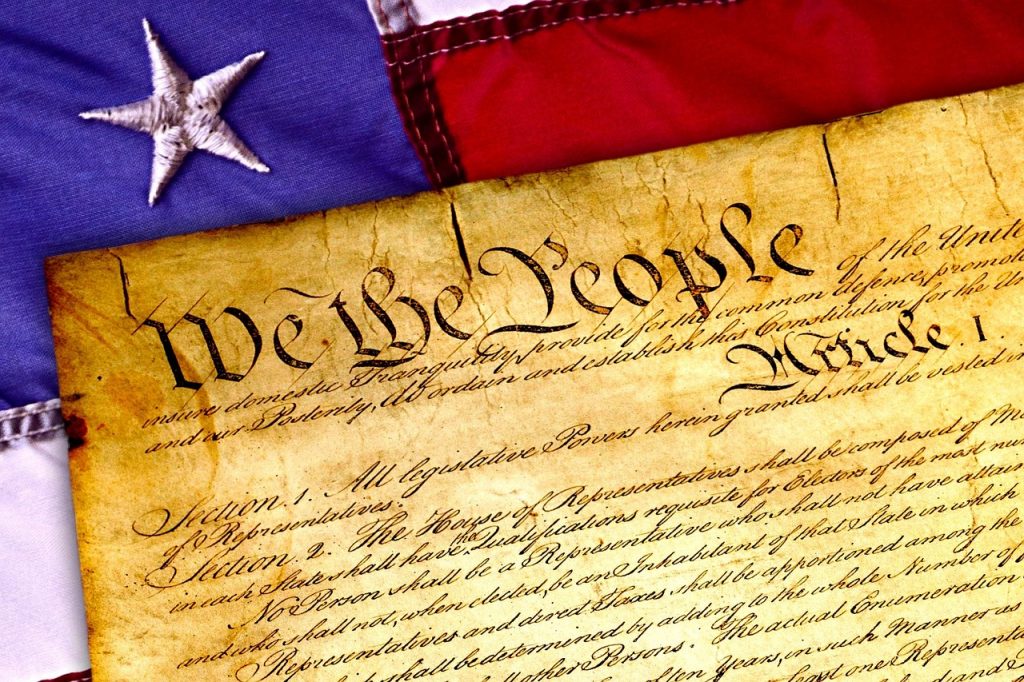
American Conservatism, in contrast, focuses on implementing the U.S. Constitution, a return to Constitutional limited government (to the extent that we’ve moved away from the Constitution), and a citizenry that rules itself rather than being ruled by a class of elites.[v] Today the battle between Conservatism and Progressivism is in full swing.
To measure which side is ahead in this contest, the scoreboard is a simple two-question matrix:
- Is the size, scope, debt, and expenditure of the federal government shrinking?
If “Yes,” Conservatism is winning.
- Is the size, scope, debt, and expenditure of the federal government expanding?
If “Yes,” Progressivism is winning.
This is the only real indicator of direction, momentum, and victory. Every other possible marker can be faked or obscured. What this scoreboard shows is that the following administrations in the modern era have increased American Progressivism (thus decreasing Conservatism/Adherence to the U.S. Constitution):
- Roosevelt
- Truman
- Eisenhower
- Kennedy
- Johnson
- Nixon
- Ford
- Carter
- Reagan
- Bush
- Clinton
- Bush
- Obama
- Trump
In contrast, the following administrations reduced the scope, size and expenditure of the Federal Government, increasing American Conservatism and adherence to the U.S. Constitution:
NONE
This comes as a surprise to many conservatives. Indeed, this reality makes it clear which approach is winning: Progressivism. But surely some of the more conservative administrations at least significantly slowed down the increasing scope, size and expenditure of government, right?
The following administrations significantly slowed these things down:
NONE
This must have been caused by the opposing liberal Congress faced by certain administrations, right? The following administrations attempted to significantly slow the increase of the Federal Government’s size, scope, and expenditure, but were thwarted by the Congress:
NONE
At first glance, for conservatives at least, this doesn’t seem to make sense. Clearly there is a big difference between some of the administrations, that of Carter and Reagan for example, or Obama and Trump. While this is true, the actual differences are not what most people tend to think.
Where the genuine application of Conservative principles often results in significant benefits to the nation, the overall trend since 1944 can only be characterized as firmly escalating in the direction of Progressivism. The nation has occasionally profited from a short-term implementation of Conservative principles (e.g. Eisenhower, Reagan, Trump), but this has not resulted in a reversal of the Progressive trend.
Moreover, during this entire timeline, Progressive momentum has accelerated. It has never reversed. Conservatism (protection and application of the U.S. Constitution and Constitutional limits) has given way to Progressivism (the expansion of the welfare state and the size/scope of the central government) during every administration in the post-World War II era.
A more accurate understanding of these trends is possible if we consider the dominant Steps of Progressivism implemented in modern American history. This allows us to more clearly rate the Conservatism vs. Progressivism of each administration:
Dominant Focus of Washington D.C. from 1860-1913
Step 1- Statism: Increase the size and scope of the government
Dominant Focus of Washington D.C. from 1913-1944
Step 2- Centralized Statism: Increase the size and scope of the federal government
Dominant Focus During the Truman, Kennedy, and Clinton administrations
Step 3- Liberalism: Use the increasing size and scope of the federal government to redistribute money from the affluent to the lower classes by state force
Dominant Focus During the Eisenhower, Nixon, Ford, Reagan, Bush, Bush, and Trump administrations
Step 2- Centralized Statism: Increase the size and scope of the federal government
Dominant Focus During the Roosevelt, Johnson, and Obama administrations
Step 4- Socialism: Use the increasing size and scope of the federal government to redistribute money from the affluent and middle classes to the lower classes by state force, putting control of the federal government in the hands of a few, and also mandate social and environmental causes that require the federal government to grow even more
Dominant Focus of the Current Left since 2016
Step 5- Globalized Socialism: Expand Progressive goals to include federal government programs for people around the globe (not limited to American citizens), requiring another massive expansion of government size and scope and progressive transfers of power and sovereignty from the American voters (and people within other nations) to international organizations and entities
PART III

There are at least three significant considerations in all of this that every American needs to understand:
- None of the presidential administrations in the post-World War II era have implemented Conservatism (the genuine application of Constitutional limits). All have supported the Progressive agenda at some level (increase of the size and scope of the federal government beyond its Constitutional boundaries, including an expansion of the welfare state). Some administrations promoted this more than others. But all are complicit in Progressivism, while none adhered to Conservatism as defined above (the Application of all Constitutional Limits, versus Increasing the Scope, Size, and Expenditure of Government).
- Presidents considered by many to be the most “Conservative” (including Eisenhower, Reagan, Trump) promoted Step 2 Progressivism but not Step 3 Progressivism. Specifically, they actively increased the size and scope of the federal government, but didn’t drastically increase redistribution of money/programs from the affluent to the lower classes by state force. This led to economic upturn through deregulation—a good result. It did not, however, reverse the momentum of the welfare state or reinvigorate Constitutional limits; as a consequence, the trend toward bigger government and increased Progressivism continues unabated.
- Presidents widely considered the most Progressive (Roosevelt, Johnson, Obama) implemented Step 4 Progressivism (socialism: major redistribution from the upper and middle classes to government programs nominally for the poor and disadvantaged) and drastically increased the growth rate of the long-term Progressive trend. This always coincided with major (albeit medium-length) economic downturn.
There has been no genuinely Conservative presidential administration (one focused on maintaining the limited size and scope of government to the specific limitations of the Constitution) since presidents Harding and Coolidge in the 1920s. All administrations since that time have promoted an expansion of the federal government in size, scope, and expenditure. The growing welfare state (Progressivism) has continually won out over Constitutional limits (Conservatism).
This has been aided by a number of decisions in the Court expanding the scope of the federal government and naming many additional federal powers “constitutional”. Ironically, such decisions are, according to the original words of the Constitution, unconstitutional.[vi]
PART IV
Why?
Why have all administrations since the mid-1920s joined the Progressive trend, even while many have loudly proclaimed their “bona fide Conservatism”? The answer may be as simple as that suggested by George Will[vii]: Most Americans actually like a lot of our government programs. And today we want more of them, not less. We want programs for “other people” to be cut or discontinued, but we tend to cling to government programs that directly benefit us.

Irony is at work here. On the one hand, voters seem to want freedom—but within limits. Specifically, they want more freedom for themselves than for others. And they want government programs—also within limits. The masses want something that has never been a reality—the quality levels attained by private schools, private institutions of higher education, private health care, and private-sector prestige jobs, provided free to all by government, and paid for by “the rich”–“the 1 Percent”.
Another way to describe our situation is that Progressivism has largely won the battle for the hearts and minds of most Americans. The Conservative ethos—that government should protect our freedoms by adhering to the U.S. Constitution, and give us nothing else, nothing at all, because the rest is up to us alone, our individual hard work, tenacity, initiative, ingenuity and good choices—is now largely a foreign concept.[viii] It is as quaint in our cities, and beyond, as vinyl records or public payphones. We want government to do things for us—lots of things. “How else will it get done?” most Americans now ask.
A majority of Americans now want to work less, make more, and receive a lot of extra government benefits paid for by someone else. If that’s what it means now to be an American, then America is on the path to major decline.[ix] And perhaps the most shocking point: Almost nobody is arguing about this.
We argue about whether or not such government benefits should go to illegal aliens. Some say “Yes, of course. Be generous”, while others respond “No way! Don’t make me pay for their needs. What about Americans, what about our needs?” But both sides miss the deeper issue. Again, most Americans now want to work less, get paid more, and receive a lot of extra government programs paid for by someone else. As long as this is our agreed-upon worldview, we’re in decline, and sinking fast.
We have, on one side, those who want more government benefits for everyone. Another side wants fewer government programs/expenditures for those who aren’t Americans.
But where are those who refuse all benefits that the government offers to them, preferring freedom? —the citizens who want to stand on their own, to make their own way without government help, who want to actually be free? Where are those kind of Americans today?
Without them, American-style Conservatism is extinct. Without them, Progressivism has won.
Most modern Americans want independence without having to select the choices that make them independent. “With all the taxes I pay, I’m not going to turn down government benefits.” The problem is, at its root, that government forces us to pay for the welfare state, whether we accept any of its benefits or not. For most people, as a result, rejecting the benefits appears illogical, even stupid. And they’re right.
But can the Constitution survive such a populace? If the masses want to work less, make more, and refuse to reject government benefits, the government will continue to grow. Limited constitutionalism is already over, in such a world.
Prediction: Unless this changes, we will only elect those promising the easy path, and we will vote ourselves consistently into decline. The Republican Party will oscillate between Progressive Steps 2 and 3, while the Democrat Party will swing back and forth between Progressive Steps 4 and 5. Regardless of which side wins elections, the federal government will keep expanding. Freedom will be redefined, redirected, and reduced, and eventually it will disappear, following the long-established pattern of great power nations.[x]
There is, of course, a solution. It is called limited government. It is outlined in the United States Constitution.
First: the federal government must be held to the twenty powers (only 20!) outlined in Article I Section 8 of the U.S. Constitution.
Second: the Executive branch and its agencies must be required (by the voters, and all those they elect) to actually follow the Constitution. Third: the Court must also be required to follow the Constitution (by the voters, and all those they elect), without dodging this duty by claiming that it can simply redefine the document whenever it wants.
The voters have all the power to make these three things happen.
We have the blueprint. It will work, if the voters demand it.
But it will only work if the voters demand it.
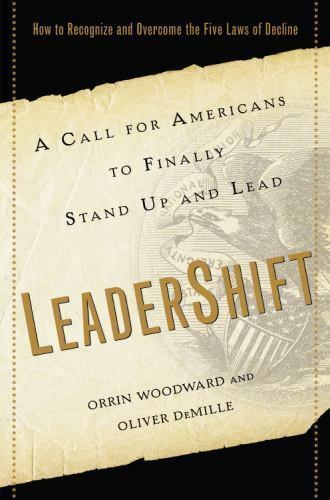 *How can we get regular citizens to be this kind of voter? The answer is outlined in the book LeaderShift: A Call for Americans to Finally Stand Up and Lead, by Orrin Woodward and Oliver DeMille. In LeaderShift you’ll learn the 5 Laws of Declining Nations, why America is currently failing all 5 Laws, and what to actually do about it. Find out how to get America back on track for the long term!
*How can we get regular citizens to be this kind of voter? The answer is outlined in the book LeaderShift: A Call for Americans to Finally Stand Up and Lead, by Orrin Woodward and Oliver DeMille. In LeaderShift you’ll learn the 5 Laws of Declining Nations, why America is currently failing all 5 Laws, and what to actually do about it. Find out how to get America back on track for the long term!
NOTES
[i] See George Will, 2019, The Conservative Sensibility
[iii] See Russell Kirk, 1974, The Roots of American Order
[iv] See Arthur Schlesinger, 1986, The Cycles of American History
[v] See op cit., Kirk; see also W. Cleon Skousen, 1985, The Making of America
[vi] The Constitution of the United States, Article III; see also Madison, Hamilton, Jay, 1989, The Federalist, Papers 78, 80, 83
[vii] See op cit., Will
[viii] See Oliver DeMille, 2014, The U.S Constitution and the 196 Indispensable Principles of Freedom
[ix] See Orrin Woodward, 2014, And Justice for All; see also Jonah Goldberg, 2018, Suicide of the West; see also Thomas Sowell, 2007, A Conflict of Visions
[x] See Paul Kennedy, 1987, The Rise and Fall of the Great Powers
Category : Aristocracy &Blog &Citizenship &Community &Constitution &Culture &Current Events &Economics &Featured &Foreign Affairs &Generations &Government &History &Independents &Information Age &Leadership &Liberty &Politics &Prosperity &Statesmanship
News of the Day: Which Constitution?
July 8th, 2019 // 9:03 pm @ Oliver DeMille

I. Today in the News
There is so much going on in the news these days–big events that have major potential to influence the future of our nation and freedom. Unfortunately, almost all the news is reported with strong partisan leanings. The slant and spin are frequently overwhelming.
To respond, I’ve decided to do an in-the-news series that steps away from current partisan spin and addresses the big news of the day from the perspective of the U.S. Constitution and the viewpoint of the American Founding. It will give readers a different way to look at things. I’ll try to keep these brief and to the point, just a few paragraphs per post. I hope you will comment and share so this can influence people…
II. July 2019: Which Constitution?
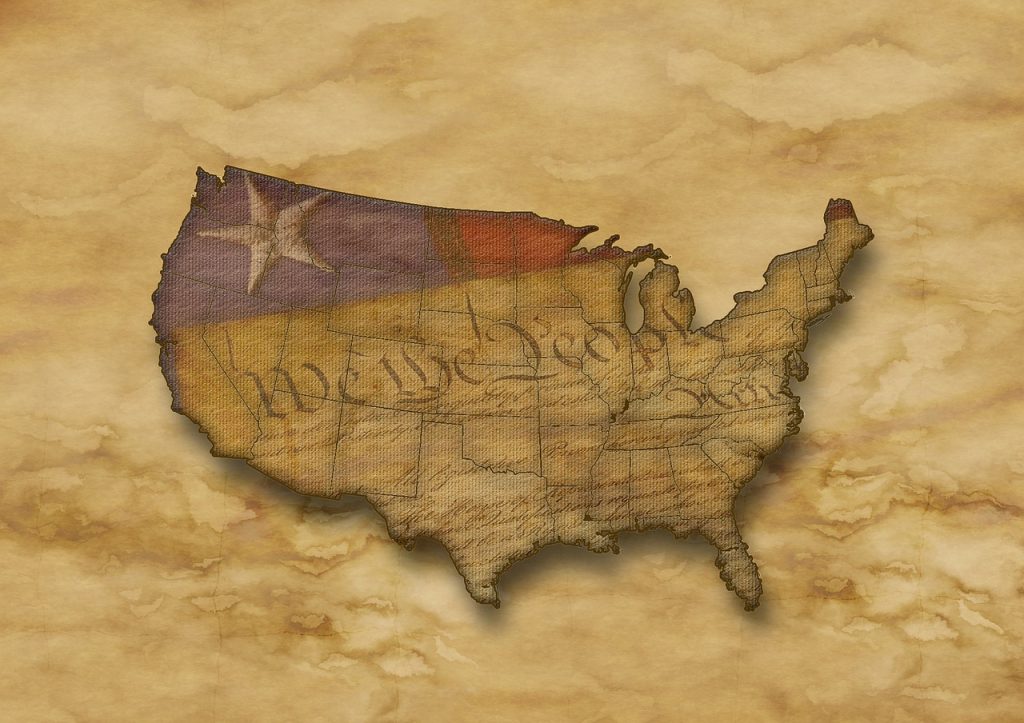
Myth: The other side (Democrats or Republicans) don’t care about the Constitution.
Fact: Actually they do. Both sides care deeply about the Constitution. But, it turns out, they care about different Constitutions. This isn’t surprising, given the way Red and Blue State cultures tend to disagree on almost everything. But most people, on both sides, don’t understand the way the other side passionately likes the Constitution. Here’s a quick primer.
Blind men describing an elephant

Three scholars (Pozen, Talley, and Nyarko) tallied speeches and comments made on the floor of Congress between 1873 and 2016 and put them to computational analysis. (See “Republicans and Democrats are Describing Two Different Constitutions“, The Atlantic, June 2, 2019) They learned that “…today’s conservatives” use the following constitutionally-charged terms a lot:
- Founding Fathers
- First Amendment
- Second Amendment
- Tenth Amendment
- individual liberty
- original intent
- inalienable rights
- states’ rights
- limits on government
Democrats, in contrast, are more likely to use the following constitutionally-charged terms:
- equality
- federal authority
- flawed origins of the Constitution
- civil rights
- right to vote
- government power
While Republicans tend to emphasize the stories and values of the American founding, Democrats the stories and values of Reconstruction and the Civil Rights era. When speaking of American flaws, Democrats frequently point to the Antebellum South while Republicans often criticize the counter-culture wars of the 1960s.
Democrats and Republicans in Congress do tend to agree on one thing: citing the Constitution to make their point. However, as Pozen, Talley and Nyarko put it:
“To an unprecedented extent, Republican and Democratic members of Congress no longer speak the same constitutional language. Underlying this polarization of constitutional discourse…are competing constitutional vocabularies.”
Bring up a controversial issue, and both sides are likely to appeal to the Constitution for support. (e.g. “The Constitution requires Trump to give Congress his tax returns” vs. “The Constitution prohibits the Treasury from giving Congress the President’s tax returns.”) The two sides cite different clauses in many cases, and nearly always provide opposite definitions and commentaries.
The bad news: the Constitution isn’t a unifying document in modern partisan politics. No surprise there. But it’s unfortunate. The good news, however, is that our nation’s top officials and experts are providing such different accounts and explanations of the Constitution that the only way most people can separate fact from fiction is to read the document for themselves. We’ve reached an ironic juncture in our era of hyper-partisanship:
Americans who want to know the real answers need to read the Constitution.
Not a bad place to be. And before you discount this and assume almost nobody from the “other side” will do it, stop and ask yourself:
Will you?
Is understanding what’s actually happening in the news worth a few minutes a day of looking it up in our nation’s most important document?
Category : Blog &Citizenship &Community &Constitution &Culture &Current Events &Education &Featured &Generations &Government &History &Independents &Information Age &Leadership &Liberty &Politics
THE JEFFERSON-MADISON DEBATES: A New Cold War is Coming PART II
June 11th, 2019 // 7:41 am @ Oliver DeMille
What Americans Can Do To Effectively Protect American Freedoms in the Decades Just Ahead
(Book Review of American, by Shanon Brooks)
Note to reader: read Part I of this report here >>
I. The Challenge
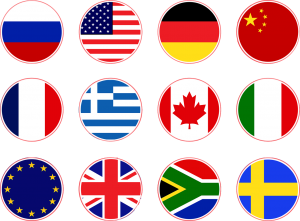
The 21st Century is shaping up as an era of major conflict, between (1) the three superpowers (the U.S., Russia, and China) and their allies and proxies (the European Union, Israel, North Korea, Iran, etc.), and also between (2) the Red- and Blue-state cultures that are further dividing America. If the U.S. doesn’t fix the problem (2) above, it will almost certainly lose the first battle (1) to China and/or Russia.
But what can regular Americans actually do? What will really work?
The three most effective things Americans can do to maintain our freedoms, families, and leadership in an increasingly dangerous world are:
- Spread great, classics- and freedom-based, leadership education
- Engage entrepreneurialism, the key to free enterprise, and encourage/help others to do the same
- Vote correctly and influence other voters to do the same (to protect and increase freedoms), and effectively influence government between elections
The battle for world leadership will come down to how well Americans do these three things. If we don’t win this battle, the world by 2040 will likely be run by two superpowers: China and Russia. Freedom values will be at odds with the rest of the world, and greatly reduced in the United States. Socialism will be the norm from the California redwoods to the beaches of Florida, from the Midwest to the Plains, and from the Rockies to Maine, in the cities and farms, and across all fifty states. Many of our most cherished freedoms will be reduced, or stolen.
How can we ensure that this doesn’t happen? A new book addresses this very question. This may be one of the most important books of our time; if we read and understand it, and take the right action, the future of America, our freedoms, our economy and our families, will be bright. If we don’t take the needed action…freedoms will be lost, socialism will spread, and families will suffer.
The book is titled simply, and sagely, American.
II. The Journey
Indeed, the title says it all. Written by Shanon Brooks, American gets to the heart of the problem, and the solutions. As Brooks puts it: “…we are killing the American Dream. Out of the top 30 countries in the world, the U.S. ranks 16th in literacy…and 14th in problem solving.”
Does that sound like a superpower? Or more like a past leader currently in decline? If we’re only 14th in problem solving, how can we truly expect to lead in the decades ahead, to tackle and solve our greatest problems, to help lead the world as it faces and overcomes the challenges ahead?
But the problem is even more daunting. Brooks wrote:
“National unfunded obligations are more than $100 trillion while U.S. household debt is at an all-time high of $13.2 trillion. We have one of the most litigious societies in the world, our incarceration rate is among the highest globally, and our state and federal legislatures are convinced that they are our cradle-to-grave caretakers.”
Unless something changes soon, and in major ways, we are not on the path to increased freedoms or economic opportunities for our children or grandchildren. In fact, we are quickly headed in the opposite direction.
As Brooks notes:
“How can we claim that America is the greatest nation in the world when 60% of our population can’t even pass the U.S. citizenship test? What have we done with the legacy of liberty that the founders so carefully crafted for us? And what are we creating to pass down to our children and grandchildren?”
The problem is real. The divide between those who even care about freedom and those who don’t is quickly expanding. And the root of the problem is at the very core of our daily lives: how we are educated, how we make a living, and how we participate (and don’t participate) as citizens overseeing and governing our own nation. As Travis Slade notes in the preface to American: “Pretty much everything about how we live today is killing the American Dream.” He’s right. And this book, American, is much more than a handbook on the principles of freedom—it’s all about how to apply those principles in the world today, in this economy, given the reality of the world we actually live in. Along the way, it addresses real issues across the board, including:
- Our Decaying Education System
- Our Work Life—Pros and Cons
- The Way People Vote and Otherwise Participate (or don’t) in Overseeing Our Government
- Commercial and Residential Construction
- The Health Care Industry
- The Transportation Industry
- The Food and Grocery Industry
- Local Law Enforcement
- The Issues of Immigration
- The Regulation State versus Free Enterprise
- Socialism versus Investment
- Employee versus Owner Mindsets
- Federal Government Overreach
- …Etc.
American asks us to seriously consider a number of poignant questions, questions that our national school/education system has patently taught us not to ask—or even think about in any meaningful way.
For example: “How can the American Dream be alive when each new American baby…inherits $300,000 of national debt…?”
And “…bureaucracy so deep and stifling that most just give up and give in.”
This book describes an America the Framers wouldn’t even recognize, a nation deeply entrenched in a bureaucratic quagmire the likes of ancient Byzantium, with a few celebrities, wealthy super elites, and top government officials (and their families) enjoying benefits akin to a medieval Venetian aristocracy.
And we call this “American?” It isn’t. It was supposed to be different. It was designed to be different. But only the people are capable of keeping our freedoms, as the Framers warned. No elites will save us. It is up to regular Americans.
III. Solutions
The best part of American is the solutions. I won’t spoil the book by listing them all here, or going into detailed applications and strategies, but they cut right to the heart of the matter, skipping symptoms and focusing on what we really need to do in order to steer things in the right direction. If we want real freedom, and effective results, we’re going to have to act. Brooks outlines what we need to do, and how to get started.
Specifically, as mentioned above, this book emphasizes the three major things we need to influence, change, and improve if America is going to survive as an effective beacon of freedom—in the world, and at home to the rising generations.
First, the right kind of education. Second, the right choices in the way we as a people make a living. And third, the way we vote—what goes into our voting decisions and the way we train up young people to be wise voters—and the ways we actively participate in governing our nation between elections.
Ultimately, these three things boil down to the quality of our learning, the kind of education we share, support, and pass on to our children and especially our young adults. If we get this right, the rest will follow. If not, our freedoms are very much in danger. America simply cannot survive three more generations of education like what we currently have.
We actually have two education systems in modern America, one for elites and those who work as the elites’ advisors, professionals, and managers, and another for the masses. Most Americans attend the second type of schools; the result is that America now educates mostly followers. This hard-to-hear reality is, nonetheless, true. It is time to face it openly, and change it. American is not just a great book on freedom and leadership, but an excellent book on higher education, right up there with Henry Newman’s great classic The Idea of a University, The Higher Learning in America by Robert Hutchins, An Education for Our Time by Josiah Bunting, and The Closing of the American Mind by Allan Bloom. Brooks benefitted from the ideas in all of these, and many others, and as a result American is the best book on higher education that I have ever read.
Every American who cares about freedom and our future should read it. And every American should care about freedom and our future.
Perhaps most importantly, Brooks’ book will introduce the reader to a number of very important ideas and principles that are seldom discussed anymore—in schools, homes, churches, or places of business, and certainly not by the media—but were once understood, cherished, and debated by every free American. The early Americans taught these things to their children, and were ashamed if any of their children couldn’t articulate these principles of freedom and life fluently and in detail. Such principles constitute the bulk of chapters 1 through 10 in American. Knowing them fully, and understanding how to apply them in society, was once considered crucial to being an American. They have now been almost entirely lost, and with them many of our freedoms. To reboot our freedoms, we must understand these vital principles and ideas.
It is time for us to know them. To pour over them, and to master them. To share them, teach them, talk about them, debate them, and apply them. It is past time. We cannot wait any longer. We must act. Again, our freedoms and the future of our posterity are at stake. If we get the freedom principles right, if we understand and effectively implement them, we will be another generation of American heroes. If not, the candle of American freedom will be snuffed out.
This is true. This is real. This is happening.
Not every person will apply the things learned in American the same way. Or even agree on every specific. This is the way it should be—free people applying principles differently, based on personal mission. But all of us should learn them. Know them. Ponder, discuss, and apply them as inspired.
It is time.
To act…
Recommended Reading
- American (Shanon Brooks) 2019—Available on the Monticello College website >>
Category : Aristocracy &Blog &Book Reviews &Business &Citizenship &Community &Constitution &Culture &Current Events &Economics &Education &Entrepreneurship &Family &Featured &Foreign Affairs &Generations &Government &History &Independents &Information Age &Leadership &Liberty &Mini-Factories &Mission &Politics &Prosperity &Statesmanship
THE JEFFERSON-MADISON DEBATES: A New Cold War is Coming – PART I
June 3rd, 2019 // 6:14 pm @ Oliver DeMille
The 3 Superpowers and The State of the World Right Now
(WHAT EVERY AMERICAN SHOULD KNOW)
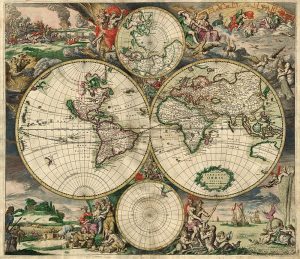
America isn’t supposed to act this way, the experts say. After all, we invented the liberal international order—the growing sprawl of international organizations, treaties, and laws that all nations are eventually supposed to join, and follow.
Founded in 1917, 1921, 1944 and almost every year since, Internationalism, now usually called Globalism, is America’s biggest export. More than freedom. More than apple pie. More than movies, even. But this whole arrangement has been turned on its head in the era of Brexit and Trump.
I: The United States
The two most powerful enemies of Globalism, Russia and China, once had a clear path to success—to slow down the growth of Globalism, slow down America and it’s NATO allies, and thereby increase their own status. For that matter, between 1944 and 2017, most U.S. policy makers had the same approach: spread U.S. influence by supporting the expansion of Globalism. Globalism itself was built on three main pillars:
- An “acronym salad” of international organizations (from the UN to the IBRD [World Bank] and IMF, from the World Court, the G7 and G8, to the GATT and eventually the World Trade Organization, etc.)
- Free trade agreements
- Collective security arrangements
By the 1980s, Internationalism dominated the U.S. government and universities; anything that differed from the aims of Internationalism was decried by experts as dangerous isolationism. When I was in college, for example, and wanted to study Political Science, multiple professors assured me that “Political Science is outdated; study International Relations–that’s the future.” The U.S. State Department and a host of foreign policy professionals in our universities convinced three generations (1964-2016) that Internationalism [and later Globalism] equals freedom, and that the U.S. is just one part of Globalism (along with a bunch of other nations)–not its indispensable leader.
This all changed with the advent of Brexit, followed by the surprising (to the “mainstream thinking”) election of Donald Trump.
According to one expert:
“Although future presidents will try to restore the classical version of U.S. foreign policy [Globalism], in all likelihood, it cannot be returned.”
(Foreign Affairs, May/June 2019, p. 10)
Why? Because President Trump is patently against free trade agreements that are built on Globalism rather than economic benefits for Americans, and against international organizations that sap American power and resources without giving back commensurate benefits to American citizens.
For the foreign policy establishment, this is heresy. After more than 70 years of trying to convince world leaders to join Globalism, Trump’s rejection of the Globalist system will probably make it impossible for heads of state to trust future U.S. assurances of Globalism. After all, as 2016 proved, a single election can significantly reverse, and even erase, seven decades of U.S. policy. This is what the American Framers intended, but it is anathema to the current foreign policy establishment.
As another article in the same issue of Foreign Affairs put it: “Can the State Department be Saved?” Short answer: No. The State Department is based on Globalism, and Globalism can be rejected by the American people in any given presidential election. The world is changed. Forever. The main reason given for this shift is interesting: the American people don’t trust “experts” anymore. (Foreign Affairs, May/June 2019, p. 14).
A secondary reason is that foreign policy experts worked very hard (from 1944 to 2016) to transfer increasing levels of power to the office of the Presidency, shifting it slowly over time from the Legislative Branch. (See ibid.) Turns out changing the Constitution in this backroom fashion has unintended consequences for the progressives who championed it.
II: Russia and China
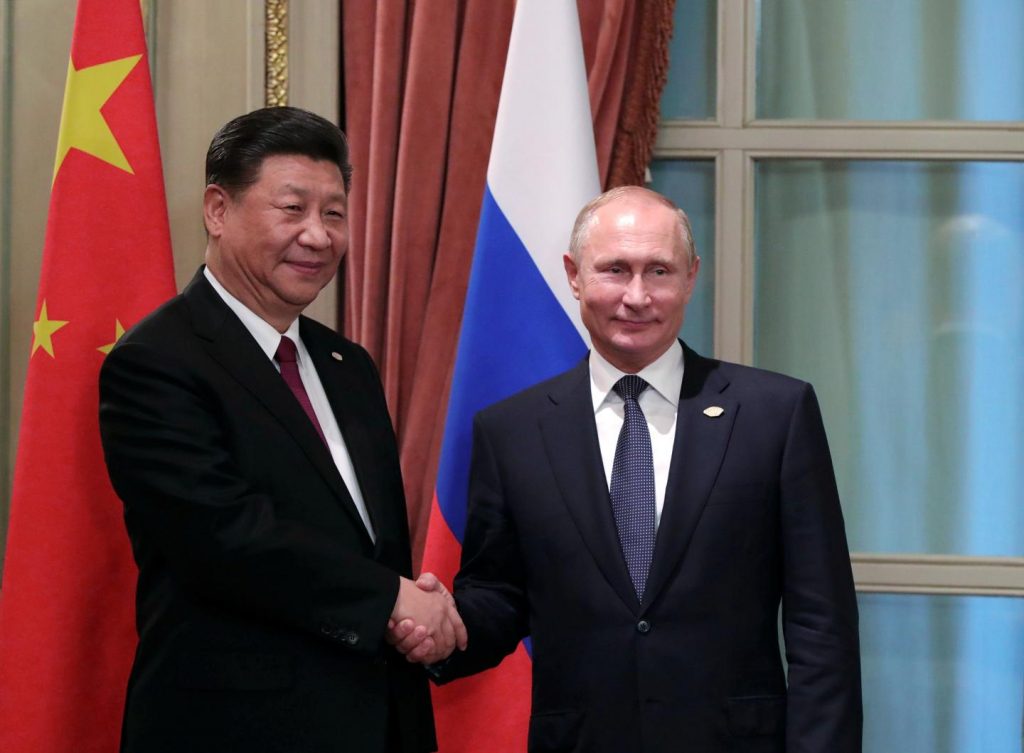
This drastic change is a shock for both Russia and China. Putin built his administration as the biggest outlier and opponent of Globalism, with a “Russia First” approach. [Richard Sakwa, 2019, Russia’s Futures]
As one Russia expert put it, Putin’s main goal for two decades has been to “Make Russia Great Again.” (Ibid.) The focus of this agenda was to keep Russia strongly in control of its own future by resisting Globalism as an ideology and Globalist international organizations in specific. Putin accomplished this by resisting the West at every turn, but simultaneously allowing Globalism to grow so that Western economies could continue to purchase Russian oil and other products.
Thus Trump and Putin agree on a general policy: “My Nation First”. But they are directly adversarial, because one wants to put the U.S. above the Liberal International Order and the other seeks to put Russia above Globalism and Globalist institutions. Same goal—opposite direction.
The two presidents have also employed very different means to achieve their goals. Trump’s main strategy has been to deregulate the U.S. economy, allowing increased economic freedom to reboot finance, commerce, entrepreneurship, and production; Putin’s major agenda has been a massive centralization of power to the office of President, i.e. himself. Putin has, in twenty years of power, created another Russian autocracy, with centralized powers that some experts say rival, or perhaps exceed, those of Stalin.
China is also drastically centralizing power to President Xi, to the point that a number of China experts consider this a return to Mao-level dominance by one leader. But unlike Russia, China worked hard from 1989-2017 to increase its influence as part of the Globalist community. It even supported, at least superficially, a level of U.S. leadership in international organizations—always with the understanding that the U.S. could lead as long as it also paid most of the bill.
The State Department largely saw this as a positive, and promised/fulfilled payments from U.S. taxpayers to numerous programs worldwide. At the same time, China frequently voted for these programs at the international level (again, as long as the U.S. was picking up the tab) and spent its own time and money buying up control of world natural resources in Asia, Africa, and Latin America. China now manages (by contract) more natural resources around the world than any other nation–far more than the United States. Ironically, communistic China preferred capitalist-style business contracts around the globe for water, food, oil, land and other natural resources, while U.S. claims to the same were usually negotiated by treaty and backed by arms rather than contract.
Today China, Russia and the United States are pulling away from each other, and all three are simultaneously pulling away from international organizations and the liberal Globalist Order. The future name of our era will likely be something like “The Return of Rivalry” (Foreign Affairs, May/June 2019, p. 19) or a “New Cold War” (Op cit., Sakwa, 2019). As Richard Sakwa put it: “Russia and the Atlantic System [NATO plus…] are locked in confrontation.” Add China to the mix, and a new Age of Rivalry is here.
Further details are sobering. For example, unlike the situation during the original Cold War, there are numerous conflicting rivalries at play right now, including:
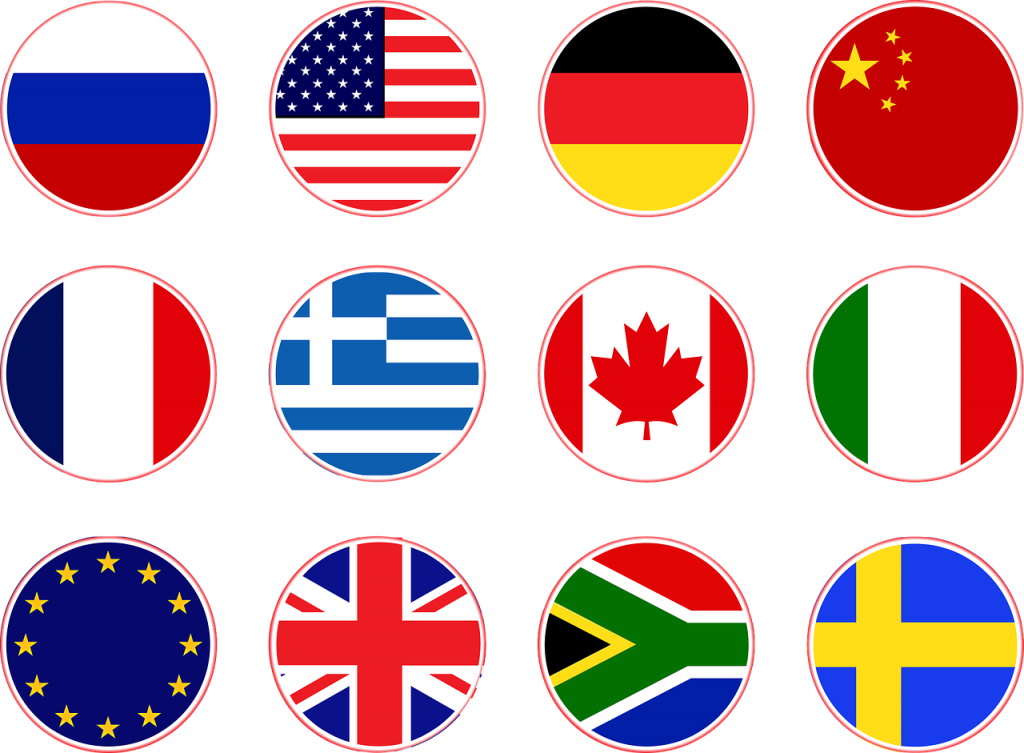
- U.S./Russia – U.S./China
- Russia/China
- U.S./European Union
- China/European Union
- Russia/European Union
- United Kingdom/European Union
- Trump Administration/U.S. Foreign Policy Establishment (or, on the broader scale, Red/Blue culture)
- U.S./North Korea (China proxy)
- China/Taiwan (U.S. proxy)
- U.S./Iran (Russia proxy)
- U.S./Cuba (Russia proxy)
- U.S./Nicaragua (Russia proxy)
- U.S./any nation with natural resources contracted to China
- Russia/any nation with natural resources contracted to China
- European Union/any nation with natural resources contracted to China
- Iran (Russia proxy)/Israel (U.S. proxy)
- Syria (Russia proxy)/Israel (U.S. proxy)
Serious flashpoints ahead. Proxies can, of course, cause major problems between superpowers, for example the Korean War and Vietnam War, not to mention the proxy-conflict that sparked World War I. Also, unlike the Red-Blue division in the United States that seems poised to create increased internal conflict in the years ahead, both China and Russia have consolidated powers, and the leading groups of influence within their respective nations are currently, and strongly, behind Xi and Putin. This solidarity is particularly surprising in Russia, where the four major power groups seldom agree on much, but right now concur that Russia should be less acquiescent to the United States and the West: “All four of the great interest-ideological blocs broadly support Putin…and indeed, the main criticism of three of them is that he has been too weak and accommodating to the West’s demands.” (Op. cit., Sakwa, 2019)
III: Dangers Ahead
If (when) any of the rivalries listed above escalates, each superpower will ultimately tend to fall back on its areas of strategic advantage. Every American should understand these advantages, for all three superpowers.
China: The Chinese strategic advantages are access to natural resources, manpower for traditional military conflict, and a tightly centralized command structure. Note that the latter isn’t an advantage for freedom, but during conflicts it is a distinct strategic benefit. China is built for outlasting the enemy, holding on and waiting for opponents to tire out, burn out, or give in. Anyone engaging a major conflict with China needs to be prepared for the long haul—and plan in terms of multiple decades rather than years.
United States: If the conflict is dominated by economics, a non-regulation-oriented Administration paired with an enterprising U.S. culture is a serious short-, medium-, and long-term advantage. (A high-regulation Administration would cancel this advantage.) In a major conflict, incentivizing the entrepreneurialism of the populace will be the major key to American victory, or even stalemate.
Russia: If the battle turns violent, Russia will be tempted to rely on the advantage of its nuclear arsenal. Indeed, in today’s New Cold War, Russia finds itself facing a very different situation than during the 1950s-1980s. At least four significant differences could change everything:
- Russia today doesn’t have the allies the USSR had. (Op. cit., Sakwa, 2019)
- China is a third superpower, complicating the whole situation, especially since it is geographically adjacent and shares the world’s largest militarized border with China. (Ibid.)
- U.S. deregulation of domestic oil production since 2016, and other contemporary increases in oil production around the world have reduced petroleum as the major income stream it once was for the USSR/Russia. (See ibid.)
- Cyber weapons are a new reality, something both China and Russia are endeavoring to master. (See ibid.)
These four shifts in geopolitics strongly increase Russia’s dependence on nuclear weapons as its main, if not only, strategic advantage. This is dangerous. And this rivalry is just heating up.
Conclusion

For the United States, the greatest danger probably won’t come from lack of resources or a nuclear attack—both can be effectively deterred by strong and unified leadership—but rather by the growing chasm between Red and Blue culture.
The worst-case scenario for U.S. national security in the Twenty-First Century may well be a pattern of yo-yo elections (Op cit, Foreign Affairs, 2019), four years Red followed by four years Blue in the Oval Office, repeating again and again. Four years isn’t enough to truly reboot the economy and military (Red agenda), or restructure the economy on more collectivist and regulatory lines to increase social equality (Blue agenda). To build one agenda for four years, then tear it down for four years, over and over, will almost certainly guarantee American weakness and long-term economic/security decline. An eight-year cycle would be less extreme, but still bad. This yo-yo pattern is also, unfortunately, the most likely scenario given current trends in America. (Ibid.)
Great superpowers are seldom conquered from without. Instead, they fight internally, causing their own decline from within. This is precisely what we are witnessing right now. The election of 2020, and even more tellingly the election of 2024, will signal which of the following paths we are pursuing:
- A U.S./China dominated world in the year 2040, or,
- A Russia/China dominated world in the year 2040
Americans must take action to effectively protect American freedoms and superpower leadership in an increasingly dangerous world.
What we as citizens can actually do, and how to do it, will be addressed in Part II of this Special Report, to be published next week.
Recommended Reading:
- Russia’s Futures, Richard Sakwa, 2019.
- The Shanghai Free Taxi, Frank Langfitt, 2019.
- Foreign Affairs, May/June 2019
- The Third Revolution: Xi Jinping and the New Chinese State, Elizabeth C. Economy, 2018.
- The Tragedy of Property: Private Life, Ownership and the Russian State, Maxim Trudolyubov, 2018.
Category : Blog &Citizenship &Community &Constitution &Culture &Current Events &Economics &Featured &Foreign Affairs &Generations &Government &History &Information Age &Leadership &Liberty &Politics &Statesmanship












